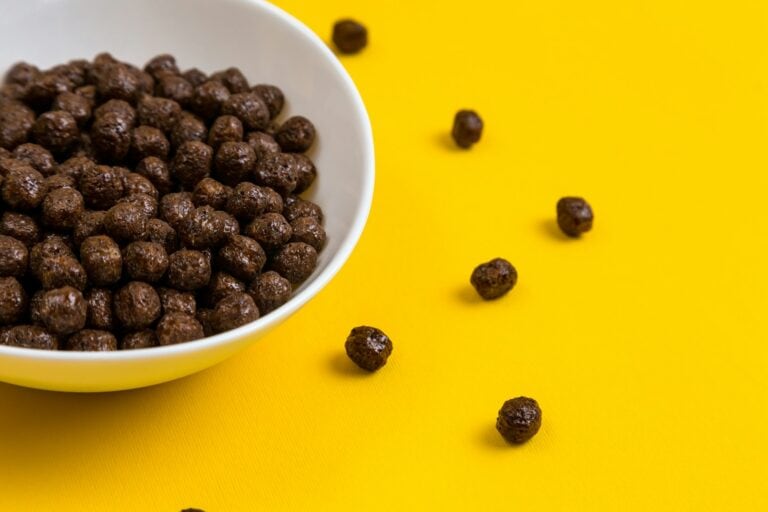I’ve always been fascinated by the way certain foods can influence our mood, and chocolate stands out as a prime example like chocolate and endorphins linked together. It’s no secret that indulging in a piece of chocolate can instantly lift our spirits, but have you ever wondered why? Researchers have pinpointed cocoa, the essential ingredient in chocolate, as a key trigger for the brain to release endorphins, those feel-good hormones that flood our system with happiness. However, not all chocolates are created equal when it comes to unleashing this blissful effect.
Diving deeper into the chocolate spectrum, it turns out dark chocolate is the true hero in maximizing endorphin release. Unlike its creamier counterpart, milk chocolate, dark chocolate contains a higher concentration of pure cocoa. Since pure cocoa is naturally bitter, it’s often mixed with sugar and milk to enhance its taste, diluting its potency in the process. Yet, for those seeking the full endorphin rush, opting for dark chocolate is the way to go. It’s a simple equation: more cocoa equals more endorphins. So, let’s unwrap the science behind chocolate and endorphins, and discover how this delectable treat can be more than just a guilty pleasure.

Understanding Endorphins and Their Effects
What Are Endorphins?
Endorphins, often referred to as the body’s natural painkillers, are neurotransmitters produced in the brain’s pituitary gland and hypothalamus. They interact with the opiate receptors in our brains, which can lead to feelings of pain relief, as well as euphoria. The term “endorphin” comes from “endogenous,” meaning from within the body, and “morphine,” which is an exogenous pain reliever. Essentially, endorphins are our internal morphine.
Their release can be triggered by various activities, including exercising, laughing, and yes, eating certain foods such as chocolate. The complex compounds found in cocoa beans, which are used to make chocolate, can stimulate the release of endorphins, contributing to chocolate’s ability to boost mood and provide pleasure.
How Endorphins Influence Mood and Well-being
The relationship between endorphins and mood is powerful. When endorphins bind to the brain’s opiate receptors, they reduce the perception of pain. But, they do much more than that — they can also boost feelings of pleasure and well-being, creating a natural high. This is why endorphins are often linked to the “runner’s high” that athletes experience after intense physical activity. However, you don’t need to run a marathon to feel this effect; consuming chocolate can also do the trick.

I find it fascinating how chocolate, particularly dark chocolate with a high concentration of cocoa, can influence our mood. The pleasure of eating chocolate triggers the release of endorphins, not just because it tastes good, but also due to its chemical composition, including compounds like phenylethylamine and theobromine. These chemicals improve our mood and sense of well-being.
Moreover, eating chocolate can lead to a slight increase in heart rate, similar to what one experiences when in love, further enhancing feelings of happiness and euphoria. It’s worth noting, however, that while endorphins play a significant role in how chocolate affects our mood, they’re just one part of a complex interaction of chemicals, including serotonin and dopamine, that can make eating chocolate such a delightful experience.
The process of consuming chocolate, especially the varieties rich in cocoa, can lead to the release of endorphins in our brains, creating feelings of pleasure and well-being. It’s a remarkable example of how what we eat can directly impact our mood and cognitive function. This gives a whole new dimension to the term “comfort food” and explains why chocolate often tops the list when we seek a mood boost.
The Science Behind Chocolate and Brain Chemistry
Delving further into the enchanting world of chocolate and its influence on our brain chemistry, I explore how this delectable treat not only satisfies our taste buds but also plays a crucial role in enhancing our mood and cognitive functions. The key to these benefits lies in the presence of flavanols, compounds found abundantly in cocoa.
The Role of Flavanols in Chocolate
Cocoa flavanols, a group of natural compounds found in the cocoa bean, are pivotal in the relationship between chocolate and brain health. Research shows that these flavanols have the ability to increase the production of endorphins and other pleasure chemicals in the brain, leading to feelings of euphoria similar to the “runner’s high” experienced after prolonged physical activity. These compounds also play a significant role in enhancing cognitive function and mood, offering a scientific explanation for why eating chocolate makes us feel good.
The effectiveness of chocolate as an endorphin-boosting treat largely depends on the concentration of cocoa flavanols. Dark chocolate, with its higher cocoa content, is therefore more potent in triggering these effects compared to milk or white chocolate. This distinction highlights the importance of choosing dark chocolate for anyone looking to maximize the mood-enhancing benefits of their chocolate consumption.
Bioavailability and Penetration of Flavanols into the Brain
Understanding the bioavailability and brain penetration of cocoa flavanols is critical in appreciating how chocolate exerts its effects on brain chemistry and mood. Once consumed, cocoa flavanols are absorbed into the bloodstream and can cross the blood-brain barrier, a selective permeability barrier that protects the brain from foreign substances. Once in the brain, these flavanols influence the release of endorphins and other neurotransmitters like serotonin and dopamine, which are key regulators of mood and feelings of happiness.
Moreover, the bioavailability of flavanols depends on their molecular structure and the matrix in which they are consumed. Pure cocoa or high-quality dark chocolate are the best sources for ensuring that a significant amount of these beneficial compounds reaches the brain, contributing to improved mood, reduced stress, and enhanced cognitive function.
My exploration into the science of chocolate and brain chemistry reveals a fascinating intertwining of nutrition, neurochemistry, and pleasure. It’s intriguing to learn how a simple act of eating chocolate taps into complex biochemical pathways to improve our mood and cognitive wellness. This deeper understanding not only enriches my appreciation for chocolate as a comfort food but also underscores the health benefits of mindful chocolate consumption, particularly when choosing varieties rich in cocoa flavanols.
How Chocolate Stimulates Endorphin Release
The Link Between Chocolate and Endorphins
Eating chocolate, especially dark chocolate, plays a pivotal role in stimulating the release of endorphins, often referred to as the body’s feel-good chemicals. When I consume chocolate, the primary ingredient, cocoa, triggers my brain to enter a state of pleasure and wellbeing, mainly due to an increase in endorphins. These chemicals, sometimes called endogenous morphines because of their ability to naturally relieve pain and induce happiness, link directly to chocolate’s effect on mood enhancement and stress reduction. The more cocoa content in the chocolate bar, the more significant the endorphin release, making dark chocolate a preferable option for those looking to maximize these effects.
Moreover, chocolate contains other compounds, like phenylethylamine and theobromine, that work alongside endorphins to uplift mood. Phenylethylamine, often associated with the feeling of being in love, further promotes the release of endorphins and other pleasure-inducing neurotransmitters in the brain, enhancing the overall experience of eating chocolate. This biochemical reaction not only explains the mood-lifting properties of chocolate but also why it’s commonly termed as comfort food. The unique interaction between chocolate’s compounds and the brain’s chemistry underscores the significant link between chocolate consumption and endorphin release.
Cognitive and Mood Benefits of Chocolate Consumption
The consumption of chocolate, particularly dark chocolate with a high cocoa content, offers notable cognitive and mood benefits, attributed largely to the endorphins and flavanols present in cocoa. These compounds improve brain function and mood by increasing blood flow to the brain, which in turn, aids in enhancing cognitive performance and providing a sense of contentment and happiness. The flavonoids found in cocoa have neuroprotective effects, safeguarding the brain against stress while promoting memory, learning, and cognitive function.
Further enhancing the cognitive rewards of chocolate consumption are its antioxidant properties. Antioxidants in chocolate help reduce oxidative stress, which can negatively affect memory and brain function. As I indulge in dark chocolate, not only am I enjoying a delightful treat, but I’m also benefiting from its mood-enhancing and cognitive-boosting effects. The release of endorphins brought about by chocolate consumption contributes to a feeling of wellbeing, alleviating stress and promoting a positive mood. This makes consuming chocolate a dual-purpose enjoyment, satisfying both my taste buds and contributing to my mental health.
Through understanding these mechanisms, it becomes clear why chocolate, especially when rich in cocoa, holds such a significant place in both culinary delight and mental wellness strategies. As I make chocolate a part of my diet, it’s comforting to know that its benefits extend beyond mere taste, positively affecting my mood and cognitive health.
The Nutritional Aspect of Chocolate
How Flavonoids in Chocolate Contribute to Health
In my journey to understand how chocolate affects our mood and cognitive function, I’ve discovered the crucial role of flavonoids found in cocoa. These compounds, prominent in dark chocolate, are responsible for various health benefits. Flavonoids in chocolate, especially those derived from cocoa, have been linked to improved heart health by enhancing vascular function and lowering blood pressure. The consumption of chocolate rich in cocoa flavanols stimulates nitric oxide production in the body, a key player in dilating blood vessels and improving blood flow. This mechanism not only contributes to heart health but also plays a pivotal role in brain function, promoting enhanced cognitive performance and contributing to the neuroprotective effects observed in chocolate consumers.
Explore the historical origins and cultural significance of chocolate through ancient civilizations in our comprehensive exploration at Chocolate in Ancient Civilizations.
Moreover, these flavonoids possess antioxidant properties, helping to neutralize free radicals and mitigate oxidative stress, potentially lowering the risk of chronic diseases. Regular intake of dark chocolate with high levels of flavonoids can contribute to a reduced risk of heart disease, owing to these antioxidants’ ability to improve cholesterol profiles and promote heart health. By indulging in dark chocolate, one can enjoy not only the mood-enhancing effects triggered by endorphins but also the long-term health benefits provided by these powerful flavonoids.
Evaluating the Healthiness of Different Types of Chocolate
When it comes to choosing chocolate for its health benefits, not all types are created equal. The key differentiator is the cocoa content; higher cocoa content typically signifies a higher concentration of flavonoids and other beneficial compounds like antioxidants. Dark chocolate is the standout choice for health-conscious individuals due to its rich cocoa composition. Usually containing 70% or higher cocoa content, dark chocolate maximizes the concentration of flavonoids, making it the most beneficial type of chocolate for health.
In contrast, milk chocolate contains a significantly lower percentage of cocoa solids, supplemented instead with milk, sugar, and cocoa butter. This dilution results in less pronounced health benefits compared to dark chocolate. Milk chocolate’s higher sugar and fat content can also counteract the positive aspects of cocoa flavonoids, making it a less desirable option for those focusing on nutritional value.
White chocolate, lacking cocoa solids entirely, consists of cocoa butter, sugar, and milk. This composition means it offers none of the flavonoid-based health benefits found in cocoa-rich dark chocolate. While it may satisfy a sweet tooth, white chocolate does not contribute to the mood-enhancing or cognitive benefits associated with cocoa flavonoids.
Discover a captivating range of chocolate-themed merchandise that extends beyond fondue, appealing to chocolate enthusiasts at Chocolate-Themed Merchandise.
Enhancing Mood Naturally
Other Foods Rich in Flavonoids
While dark chocolate is a delectable source of mood-boosting flavonoids, it’s not the only food that can enhance our well-being through these powerful compounds. In my exploration of nutritional science, I’ve discovered that a variety of foods are rich in flavonoids, each contributing to the enhancement of mood and cognitive function in unique ways. Berries, such as strawberries, blueberries, and raspberries, are packed with flavonoids that not only tantalize the taste buds but also contribute to improved brain function and a lower risk of heart disease. Similarly, the deep red and purple hues of grapes and red wine are indicative of their high flavonoid content, which has been linked to heart health and a reduction in stress levels.
Green tea is another exceptional source, offering a unique amino acid called L-theanine alongside its flavonoids, which together promote relaxation and improve focus without the jitteriness associated with caffeine. Citrus fruits, with their bright colors and refreshing flavors, provide flavonoids that boost heart health and enhance mood. Moreover, apples and onions, though less celebrated for their mood-enhancing abilities, are staple foods in many diets that are rich in flavonoids, contributing to overall well-being.
Lifestyle Choices That Boost Endorphins
Beyond the food we eat, certain lifestyle choices play a critical role in naturally enhancing our mood by boosting endorphin levels. Regular physical exercise, for example, is renowned for its ability to trigger the release of endorphins, often referred to as the “runner’s high.” Engaging in activities such as jogging, cycling, or swimming for at least 30 minutes a day can significantly lift our spirits and improve overall health.
Meditation and mindfulness are also potent tools for increasing endorphin levels, promoting relaxation, and reducing stress. By focusing on the present moment and practicing deep breathing techniques, we can invoke a sense of calm and happiness that permeates our entire being.
Social interactions and laughter are similarly effective in elevating endorphin levels. Spending time with loved ones, sharing jokes, and experiencing genuine laughter can stimulate the release of endorphins, reinforcing social bonds and enhancing our mood.
Immerse yourself in the decadent world of chocolate fashion with insights from chocolate fashion shows at Chocolate Fashion Shows.
Lastly, listening to music that we enjoy can prompt the release of endorphins, providing a simple yet profound way to boost our mood and overall sense of pleasure. Whether it’s a soothing classical piece or an upbeat pop song, music has the power to uplift us and improve our mental health.
By incorporating these foods and lifestyle choices into our daily routines, we can naturally enhance our mood and overall sense of well-being, embracing the joy and richness that life has to offer.
So there you have it. Dark chocolate isn’t just a treat for your taste buds but also a boon for your mood and cognitive health. By understanding the science behind how chocolate influences our brain’s chemistry, we can appreciate even more the joy it brings to our lives. And let’s not forget about the array of other flavonoid-rich foods and healthy lifestyle choices that can similarly uplift our spirits. Embracing these elements can lead to a happier, healthier life. So next time you reach for that piece of dark chocolate, remember it’s not just indulgence—it’s a step towards enhancing your well-being.
Explore delightful chocolate party favors that add a touch of sweetness to any occasion at Chocolate Party Favors
Frequently Asked Questions
Does chocolate release the same endorphins as love?
Yes, chocolate contains compounds such as phenylethylamine that are associated with the release of mood-lifting chemicals in the brain, similar to those experienced when falling in love.
Does coffee increase dopamine?
Caffeine in coffee increases dopamine in the brain by blocking its reabsorption. It doesn’t create more dopamine but allows it to remain in the brain longer.
Is chocolate a stimulant or depressant?
Chocolate acts as a stimulant, not only enhancing attention and brain function but also significantly affecting blood pressure levels.
Does chocolate increase dopamine or serotonin?
Chocolate contributes to an increase in serotonin due to its content of tryptophan, which may lead to feelings of happiness, calmness, or reduced anxiety.
Why is chocolate so addictive?
Chocolate’s addictiveness comes from its sugar and fat content, which activate the brain’s reward pathways, making it more addictive than less processed foods.
